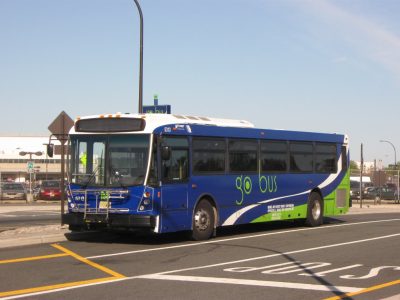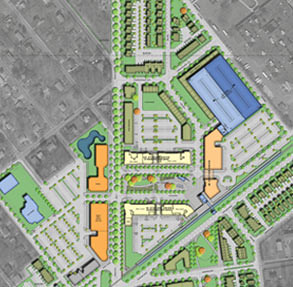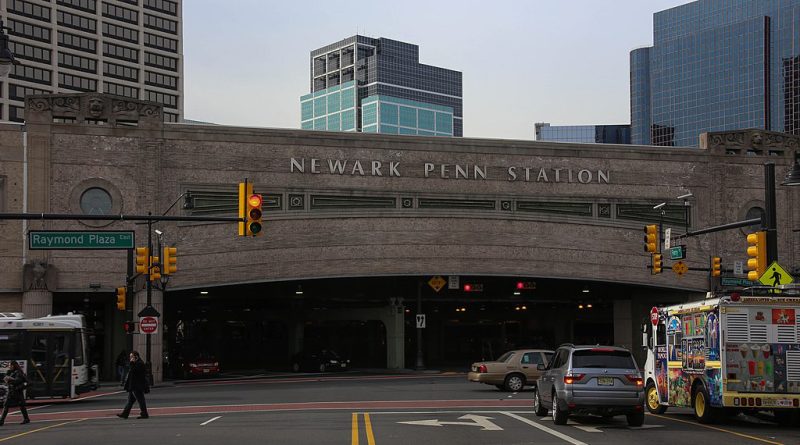In 2009, the Tri-State Transportation Campaign (TSTC) awarded grants of between $10,000 and $50,000 to eight municipalities within the TSTC region of New Jersey, New York, and Connecticut for projects that promote mixed-use, mixed-income development within a half mile of bus or rail stations. The winners, selected from more than 40 applicants, were as follows: Stratford, CT; Mount Vernon, NY; Peekskill, NY; Ronkonkoma, NY; Wyandanch, NY; Newark, NJ; and Trenton, NJ. Recently, grant recipients presented results at TSTC’s 2011 Transit-Centered Development Conference. Work conducted in Trenton and Newark, as well as that in Wyandanch on Long Island, provide useful lessons for others pursuing TOD throughout the region.
Trenton used its grant to elicit public input on future development near the Trenton Transit Center. That facility, the object of a $75 million makeover completed in 2009, acts as a hub providing connections between NJ TRANSIT’S Northeast Corridor, RiverLINE light rail line, and bus services, Amtrak’s Northeast Corridor intercity service, and SEPTA’s service to Philadelphia.
Trenton is actively encouraging adjacent mixed-use redevelopment of new housing, retail, and office spaces near the station. The 14-member citizens’ advisory committee of local stakeholders, formed in 2009, has been advising the city on station area planning efforts. The citizens’ advisory committee utilized the TSTC grant to hire a respected advocacy group, NJ Future, to facilitate committee meetings and to conduct a series of public meetings to broaden public input. In all, more than 250 area residents took part in the committee’s public forums, where they learned about station area redevelopment plans and offered feedback about the city’s plans for the station area. The feedback was incorporated into a report of findings and recommendations to the city. Recommendations focused on four areas: public safety, benefits to existing residents, workforce development, and eminent domain.

The TSTC grant to Newark allowed the city, working with the New Jersey Institute of Technology (NJIT) and NJ TRANSIT, to investigate what changes to its zoning ordinance could be made to encourage pedestrian-friendly development on the Springfield Avenue bus rapid transit (BRT) route. Connecting the Irvington Bus Terminal and Newark Penn Station, the Springfield Ave BRT or Go Bus links 11 stops over 4.8 miles. After debuting in 2009, the BRT route has quickly gained substantial ridership, such that service was doubled not long after it opened to accommodate demand. Riders can now board one of 18 trips made each weekday morning and afternoon. This demand spurred the city to pursue efforts to encourage development along the route, using as a baseline the Kent/Brenner/Springfield Redevelopment Plan, adopted in 2009, through which Springfield Avenue runs. The city explored strategies for streetscape improvements that would enhance the pedestrian environment and identified potential land uses for vacant and underutilized properties near the BRT stops, including the Plan’s proposed Springfield Avenue Marketplace. The largest new mixed-use development in the city, the Marketplace will be 205,000 square feet, including 120,000 square feet of retail space. NJ TRANSIT staff contributed expertise and “in-kind” resources to move this effort forward—providing details on the operations of the Go Bus and reviewing concepts during the development stage so as to ensure that direct connections to the bus network were preserved and enhanced.

On Long Island, Wyandanch, a hamlet in the town of Babylon, used its grant to compile a toolkit of low-impact, sustainable design practices that could inform its Wyandanch Rising Community Revitalization Initiative, an ongoing effort to revitalize the Wyandanch station-focused town center. That initiative coordinates different transit modes, improves bicycle and pedestrian facilities, and improves the streetscape and way-finding. Wyandanch’s plan also includes redeveloping nearby parcels for mixed-use buildings, including affordable rental housing units, retail and office space, and public green space. The selection of the developer for the Wyandanch Rising project is expected soon.
The toolkit provides strategies that could be used by future developers for implementing environmentally-friendly design practices to mitigate storm water runoff and adverse effects of construction, as well as methods to preserve the town’s surface and groundwater conditions. These recommendations have been incorporated as the Wyandanch Transit Oriented Development Conceptual Design, which forms a part of the redevelopment plan for the train station area.
Wyandanch’s efforts have had an impact on the larger community as well. As part of this effort, Wyandanch recommended the adoption of a Complete Streets policy for the redevelopment area. In 2010, Babylon approved the policy, based in part on Wyandanch’s recommendations in its Conceptual Design handbook.

